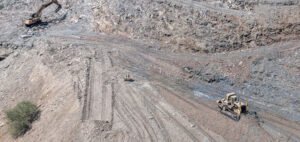Prime Highlights:
Saudi Arabia’s bank loans reached SR2.93 trillion ($782 billion) in November 2024, reflecting a 13.33% year-on-year growth—the highest in 22 months.
Corporate loans increased by 17.28% to SR1.58 trillion, marking the highest annual growth since 2021.
Key Background:
Saudi Arabia’s banking sector witnessed a remarkable surge in corporate lending in November 2024, with total bank loans rising to SR2.93 trillion ($782 billion), marking a 13.33% year-on-year growth—the highest rate in 22 months. Data from the Saudi Central Bank (SAMA) revealed that corporate loans were the primary driver behind this expansion, increasing by 17.28% to SR1.58 trillion. This growth rate is the highest annual growth for corporate lending recorded in SAMA’s data since 2021.
Real estate activities led the surge, comprising 21% of total corporate lending, and experiencing a substantial 32% growth to SR328 billion. Wholesale and retail trade followed with a 13% share, rising by 10.62% to SR201.6 billion. The manufacturing sector, crucial to Saudi Arabia’s Vision 2030 economic diversification agenda, represented 12% of the corporate lending, amounting to SR182.44 billion.
Electricity, gas, and water supplies contributed 11% to the corporate lending total, growing by 27.74% to SR178.56 billion. Professional, scientific, and technical activities, though accounting for a smaller 0.53% share, experienced the most significant growth, soaring by 54.44% to SR8.38 billion. Education sector loans also showed strong growth, rising by 29.93% to SR8 billion. On the personal lending front, loans for individuals reached SR1.35 trillion, a 9.05% annual increase, reflecting continued consumer confidence and economic stability within the Kingdom.
The positive growth in lending is underpinned by the broader economic diversification strategies outlined in Vision 2030. As global interest rates remain lower, sectors such as real estate, manufacturing, and education are expected to benefit from more affordable borrowing conditions, further accelerating Saudi Arabia’s transformation.
The strength of Saudi banks’ capitalization also supports continued lending activity. According to SAMA, the banking sector’s regulatory capital to risk-weighted assets stood at 19.2% in Q3 2024, well above the Basel Committee’s minimum requirement of 8%. Additionally, the Tier 1 capital ratio reached 17.7%, highlighting the resilience of the sector in supporting the Kingdom’s ambitious economic goals. Despite some risks associated with sectoral loan portfolios, including exposure to real estate, Saudi banks remain well-capitalized and resilient to potential economic shocks. This, coupled with improved lending quality and strong provisioning strategies, positions the banking sector for continued growth and stability.




